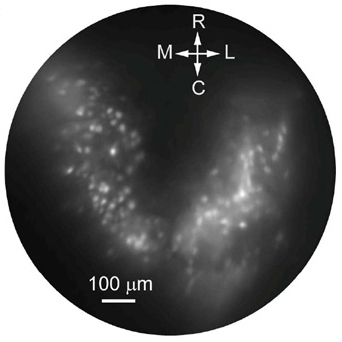Hot Off the Press! – October 2016

Barbera, Giovanni; Liang, Bo; Zhang, Lifeng; Gerfen, Charles R; Culurciello, Eugenio; Chen, Rong; Li, Yun; Lin, Da-Ting
Spatially Compact Neural Clusters in the Dorsal Striatum Encode Locomotion Relevant Information. Journal Article
In: Neuron, vol. 92, no. 1, pp. 202–213, 2016, ISSN: 1097-4199 (Electronic); 0896-6273 (Linking).
@article{Barbera2016,
title = {Spatially Compact Neural Clusters in the Dorsal Striatum Encode Locomotion Relevant Information.},
author = {Giovanni Barbera and Bo Liang and Lifeng Zhang and Charles R Gerfen and Eugenio Culurciello and Rong Chen and Yun Li and Da-Ting Lin},
url = {https://www.ncbi.nlm.nih.gov/pubmed/27667003},
doi = {10.1016/j.neuron.2016.08.037},
issn = {1097-4199 (Electronic); 0896-6273 (Linking)},
year = {2016},
date = {2016-10-05},
journal = {Neuron},
volume = {92},
number = {1},
pages = {202--213},
address = {Intramural Research Program, National Institute on Drug Abuse, National Institutes of Health, 333 Cassell Drive, Baltimore, MD 21224, USA; Weldon School of Biomedical Engineering, Purdue University, 206 S. Martin Jischke Drive, West Lafayette, IN 47907, USA.},
abstract = {An influential striatal model postulates that neural activities in the striatal direct and indirect pathways promote and inhibit movement, respectively. Normal behavior requires coordinated activity in the direct pathway to facilitate intended locomotion and indirect pathway to inhibit unwanted locomotion. In this striatal model, neuronal population activity is assumed to encode locomotion relevant information. Here, we propose a novel encoding mechanism for the dorsal striatum. We identified spatially compact neural clusters in both the direct and indirect pathways. Detailed characterization revealed similar cluster organization between the direct and indirect pathways, and cluster activities from both pathways were correlated with mouse locomotion velocities. Using machine-learning algorithms, cluster activities could be used to decode locomotion relevant behavioral states and locomotion velocity. We propose that neural clusters in the dorsal striatum encode locomotion relevant information and that coordinated activities of direct and indirect pathway neural clusters are required for normal striatal controlled behavior. VIDEO ABSTRACT.},
keywords = {},
pubstate = {published},
tppubtype = {article}
}
An influential striatal model postulates that neural activities in the striatal direct and indirect pathways promote and inhibit movement, respectively. Normal behavior requires coordinated activity in the direct pathway to facilitate intended locomotion and indirect pathway to inhibit unwanted locomotion. In this striatal model, neuronal population activity is assumed to encode locomotion relevant information. Here, we propose a novel encoding mechanism for the dorsal striatum. We identified spatially compact neural clusters in both the direct and indirect pathways. Detailed characterization revealed similar cluster organization between the direct and indirect pathways, and cluster activities from both pathways were correlated with mouse locomotion velocities. Using machine-learning algorithms, cluster activities could be used to decode locomotion relevant behavioral states and locomotion velocity. We propose that neural clusters in the dorsal striatum encode locomotion relevant information and that coordinated activities of direct and indirect pathway neural clusters are required for normal striatal controlled behavior. VIDEO ABSTRACT.
